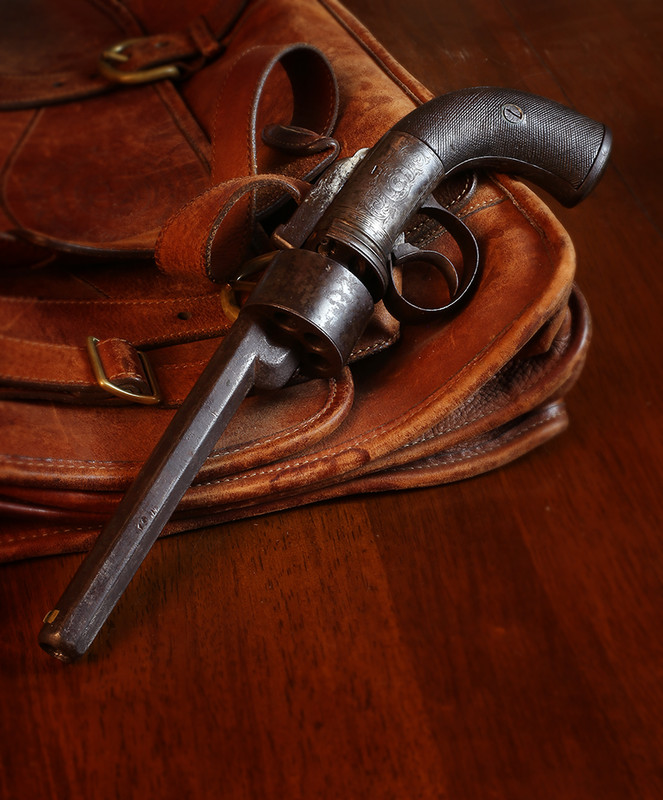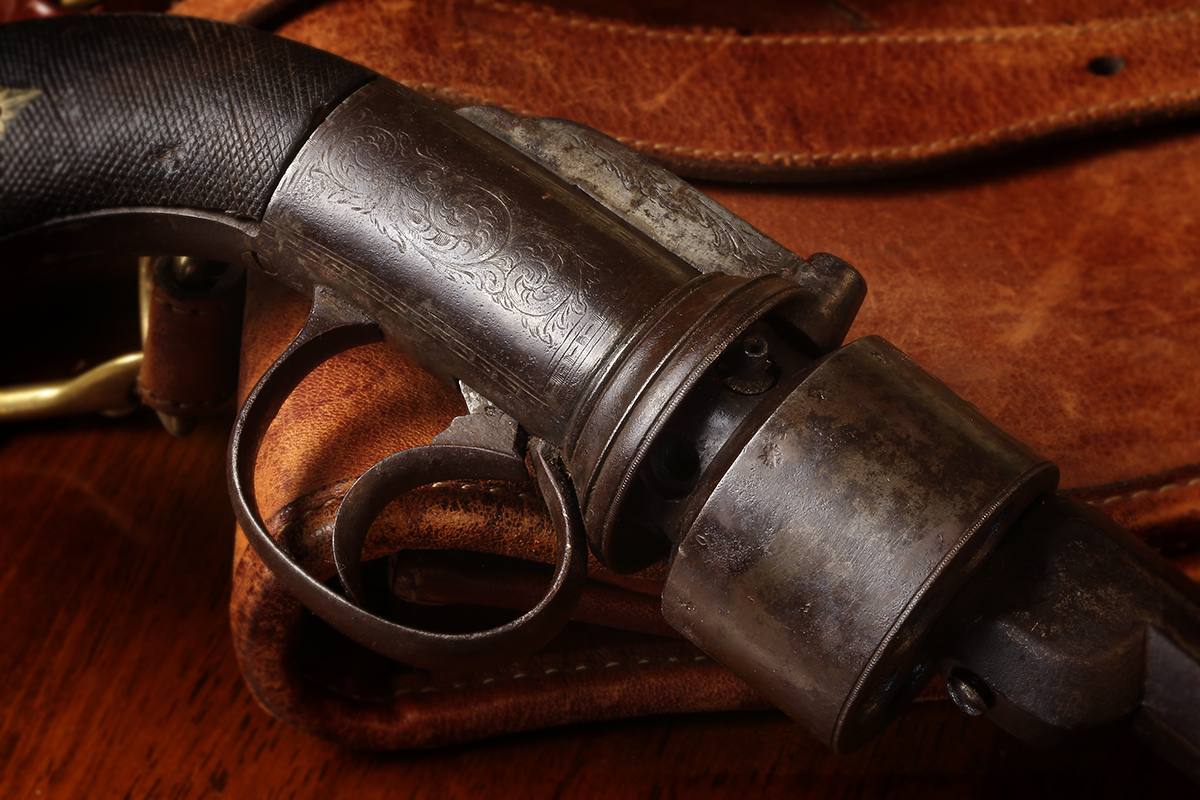Go  | New  | Find  | Notify  | Tools  | Reply  |  |
| Member |
It seems like the more you dig into 19th century firearms development, the more you see just how much impact patents have. Get there first and grab a patent (and have the capitol to defend it in court) and you get to make your latest and greatest. The guy behind you in line has to go to the drawing board with a list of things he can't do, which if nothing else, led to some "interesting" designs.  The so called "transitional revolver", or as it is described in the only markings on the top of the barrel, "The Improved Revolving Pistol". These were a fairly popular dodge around Colt's patent on the revolver, using the double action mechanism of the pepperbox style pistols, and with the percussion nipples mounted on the side of the cylinder. Apparently that was different enough to keep Sam Colt's lawyers from the door.  Three piece construction, the frame, a relatively short cylinder, and a barrel that is held on by threading onto the cylinder arbor. The double action pull is heavy, but not unusable, and I suppose these wouldn't have been a completely horrible choice, definitely probably better than a large caliber pepperbox style form a weight and balance standpoint. In any case, patents run out, and it wasn't long before British gunmakers were running full speed ahead and turning out very good percussion revolvers. Maybe even (dare I say it) better than their contemporaries from the US. Bill R | ||
|
Member |
Always enjoy your posts. Many interesting pieces & amazing photos. The Enemy's gate is down. | |||
|
| Member |
There are so many really cool designs people came up with trying to develop the “best” personal defense pistols. Some of them from just trying to make a better pistol, some from trying to skirt a patent infringement suit while getting “close enough”… Bill R | |||
|
| Member |
John Browning said John Pedersen was the best designer in the business. But Pedersen was playing catch-up and had to work around Browning patents which made some of his stuff come out a little odd. | |||
|
| My other Sig is a Steyr.  |
Cool! | |||
|
| Member |
Revolvers don't revolve, they rotate. | |||
|
| Powered by Social Strata |
| Please Wait. Your request is being processed... |
|
© SIGforum 2025